When the airplane dipped through the white fluff of the clouds and I could see the first icebergs sparkling from the sun in the Fjord of Narsarsuaq, I knew this was going to be a great Greenland field season. The plan was to spend the next four weeks in the field to investigate how a little fish can adapt to an ever-changing environment, the fish I’m talking about is the three-spined stickleback (Gasterosteus aculeatus), a species famous in the field of evolution and ecology. Why, you ask? Well, this fish is originally a marine fish and so it adapted to the ocean environment, however it has adapted independently multiple times to freshwater in the Northern Hemisphere. This adaptation can happen as fast as in ten generations – a short time span on the evolutionary scale and therefore of incredible interest to people like me (I am a molecular ecologist).
For the last few years, my supervisor’s team has gone to Greenland to investigate various projects and this year it was my turn. The goal was to keep up with an ongoing long-term project and experiments as well as start my own project – the investigation of the role of water conductivity in stickleback morphology – more on this later.
We arrived at the airport of Narsarsuaq – a tiny airport not bigger than a field with a few runways – one of the smallest airports I have ever seen. From there we were brought to the harbour to embark on a boat and get to the other side of the fjord to Qassiarsuk. While the captain was navigating us through the icebergs, we could spot the little village on the other side of the fjord where we would reside for the next weeks – the same fjord where Eric the Red established the first Norse settlement in circa 984.
We were picked up by the first Greenland team: my supervisor, our technician and a collaborator, all of them had been previously in Greenland and had been already in the field for the past two weeks. Our home for the foreseeable future: a little turquoise house in a small village with only a couple more homes, a shop, and several farms. For the first few days the beauty and tranquillity of Southern Greenland were stunning and we newbies, who had never been to Greenland, were amazed.
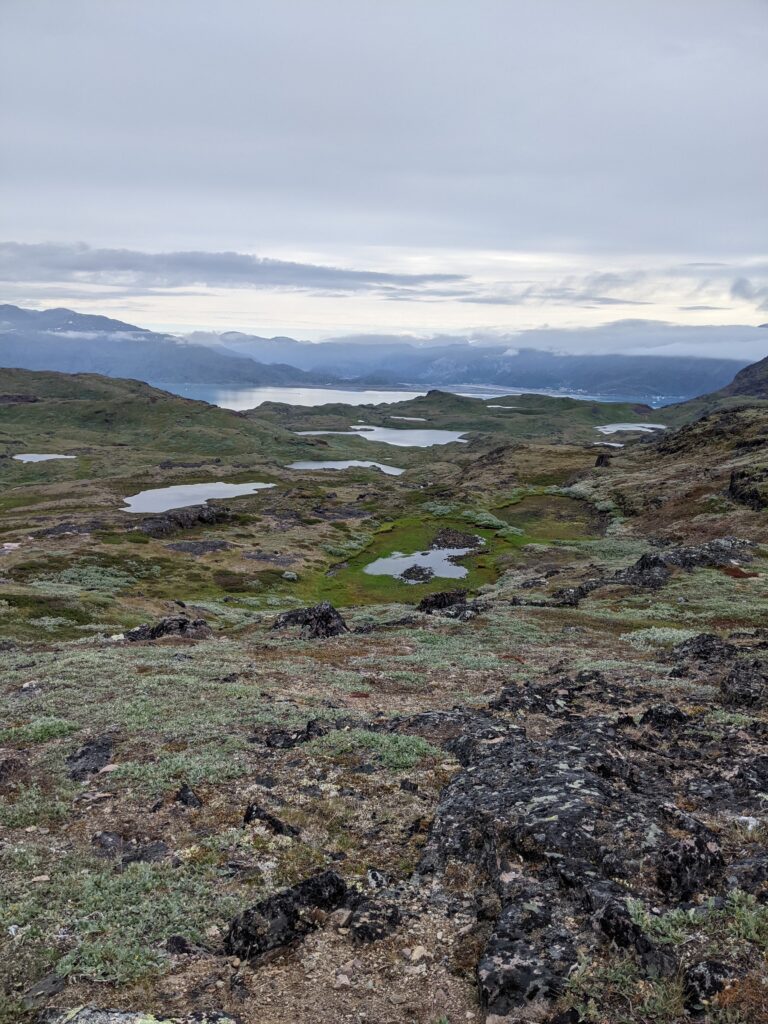
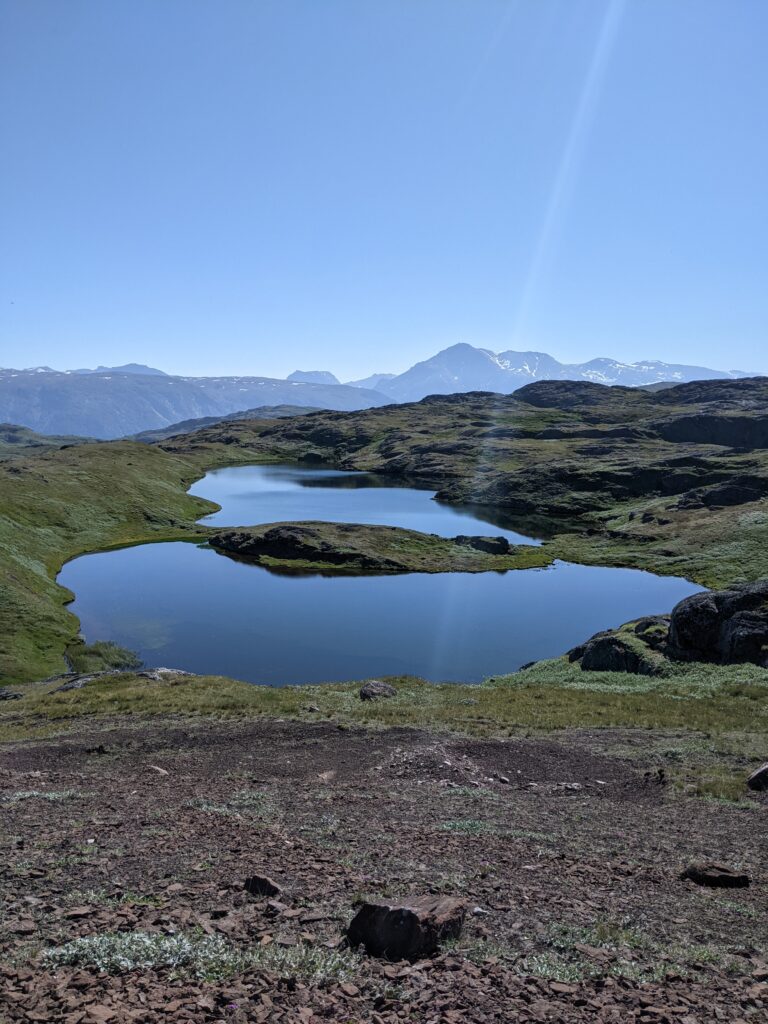
Let’s come back to the whole reason why we came here – science. My plan was to investigate how sticklebacks are able to adapt to a climate-mediated variation in water conductivity in the lakes of Southern Greenland. To investigate this, I had to sample fish as well as physical and chemical data to see if there is a correlation between water conductivity and stickleback morphology. Conductivity is the physical ability of water to conduct electricity and is mostly defined by dissolved ions (i.e., sodium, calcium) in the water. Many of you might ask why study sticklebacks in Greenland. Well, there are several reasons. First, why Greenland? Southern Greenland offers a unique location to study evolution as the ice sheet covered the entire land mass until around 22,000 years ago. With the ice sheet retreat, deglaciation and a vertical uplift of the landmass, the landscape was characterised by many freshwater lakes into which marine three-spined sticklebacks migrated. At the same time ongoing climate change is not only creating new lakes but also is changing the conductivity of existing lakes though a combination of effects, such as mineral input of glacial melting, weather, flushing rates, and evaporation.
Now, why sticklebacks – why not another fish? That is an easy question to answer. There are not many freshwater fish species in Greenland, to be more precise there are actually only two: the stickleback and the Arctic char. The stickleback however is a model organism which has been intensely studied around the world, so the genomic resources available are incredible. Secondly, we know that the fish look different in different lakes, and we are trying to figure out why and how that could impact their future.
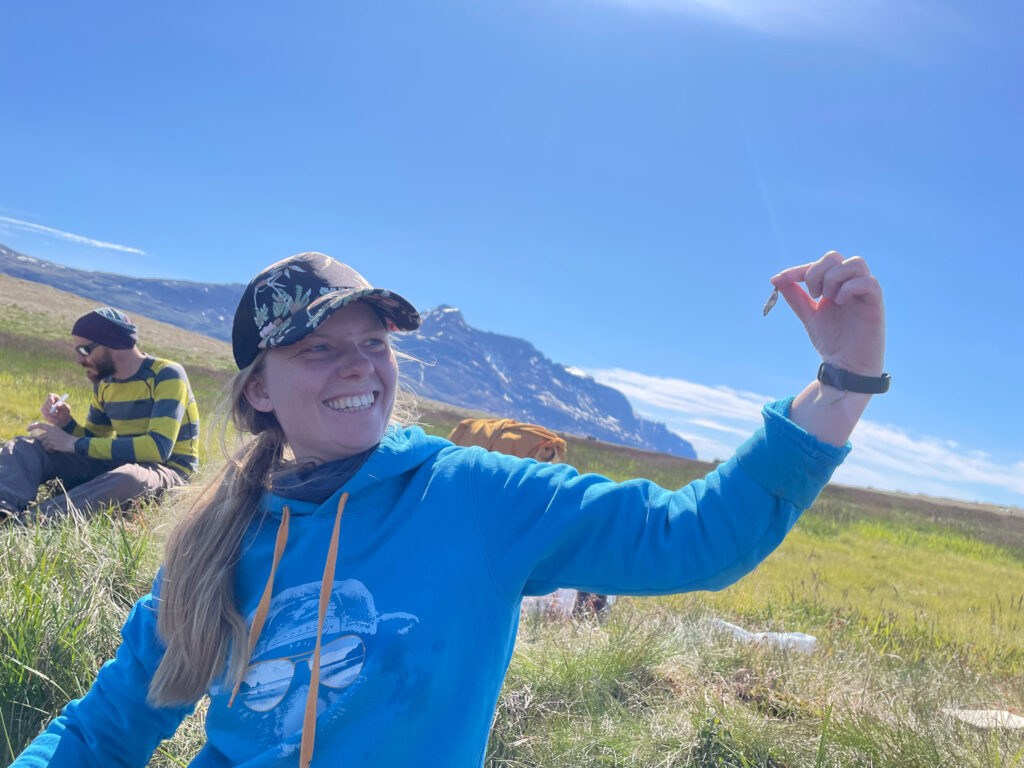
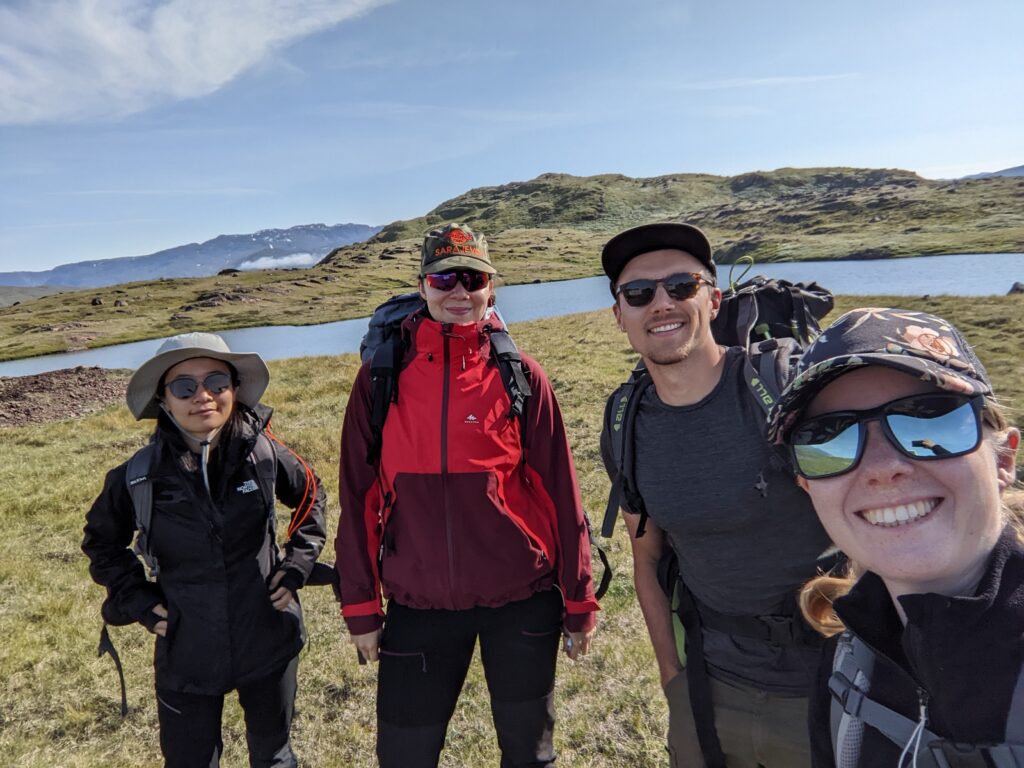
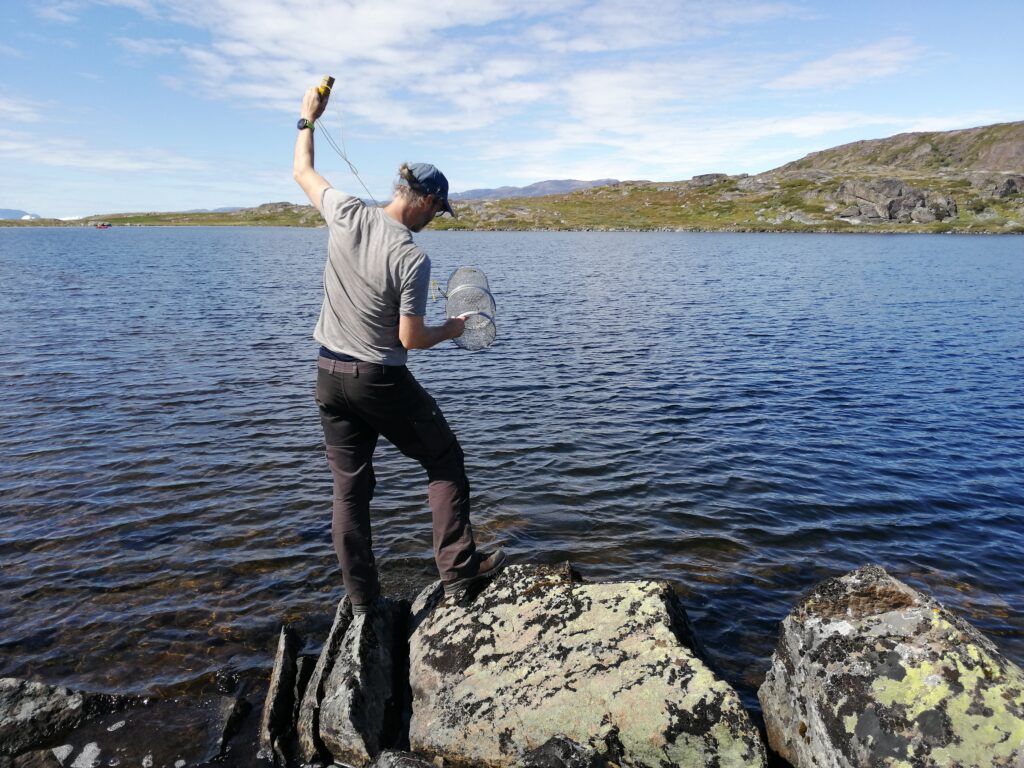
We settled really quickly into our daily routine. Each day we would pack our backpacks with gear and head out into the field with our four-wheel drive; probably a 30-year-old car but running like clockwork. Most of the sites are inaccessible by road so we parked the car in the nearest “parking spot” to our lake of the day. A better description probably would be that we parked on the side of the road which was dry and looked safe enough to park. We then hiked to the sample sites, which could be up to an hour one way. Yet we didn’t mind as our hikes took us along fjords filled with icebergs, eerily cracking in the distance; or we were trekking higher up in the hills of Southern Greenland along sheep paths in green lush fresh grass with a beautiful view towards the Greenland ice sheet and fjords. Sometimes, we could spot eagles, border collies and even Icelandic horses with their foals, but most of the time sheep and their lambs kept us company. We just felt incredibly lucky – there are not many jobs in the world with this view.
Once we arrived at the sample site, we set the traps to catch the fish. Then we started our water chemical and physical data collection. For that we needed to get into the middle of the lake, so we inflated our kayak, took the gear and paddled out to the deepest part; there we collected water samples and water properties with a specialized sonde, and measured water depth. Once that was done, we retrieved the fish traps and went to the next side and the whole process started again – rinse and repeat for multiple lakes a day. At the end of the day when we came home, we had to do post-field processing including fin-clipping – a part where you clip a small part of the fin from the fish and store it in ethanol – and a small part of a bone for further analysis. We also froze the fish for analysis of the phenotype (how the fish looks like). Our days were long but since the sun never really set, we could enjoy the beauty of Greenland even after a long day of work.



From left to right: Zixin Li and Hanna Rosinger counting the trapped fish / Hanna Rosinger, Zixin Li, Connor Morang inspecting water samples / One of the biggest sticklebacks we caught this year. © 2023 Maja Drakula, Hanna Rosinger, all rights reserved
We were unbelievably lucky with the weather; it was sunny and 21°C the entire time – very atypical and certainly among the first signs of climate change in this area.
After four weeks, our adventure field time came to an end and the last few days were filled with packing up all our gear. And there we were again, on the same fjord as four weeks before but this time we had 11 metal boxes ready to be brought to the other side of the fjord and were ready to fly home.
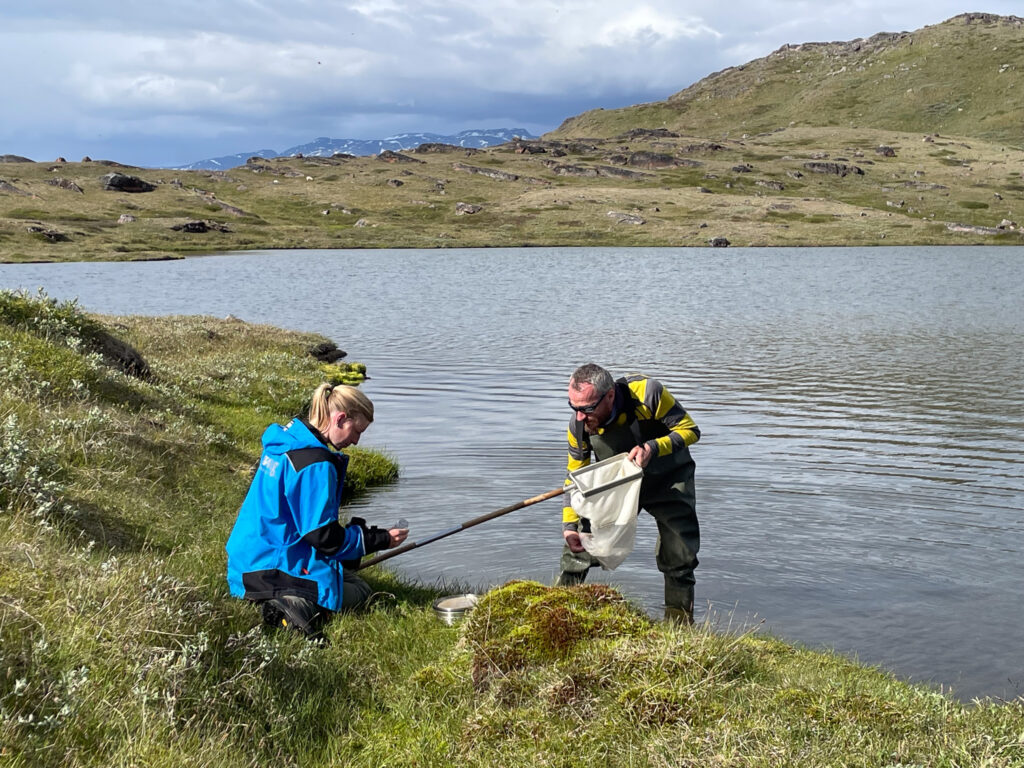
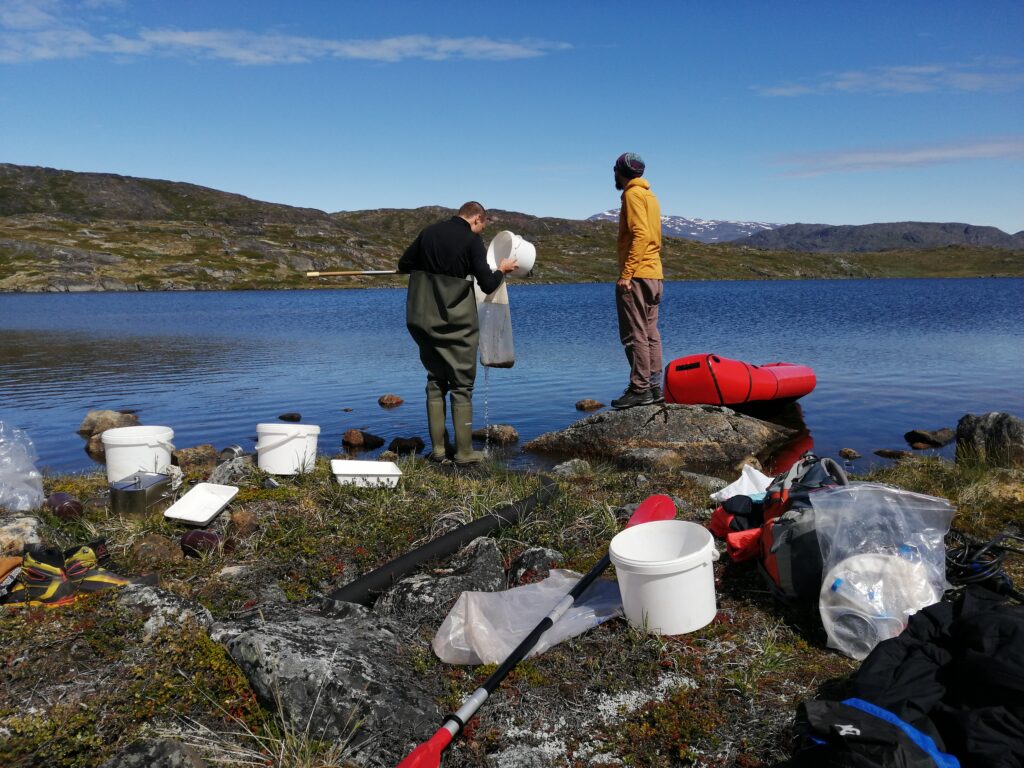
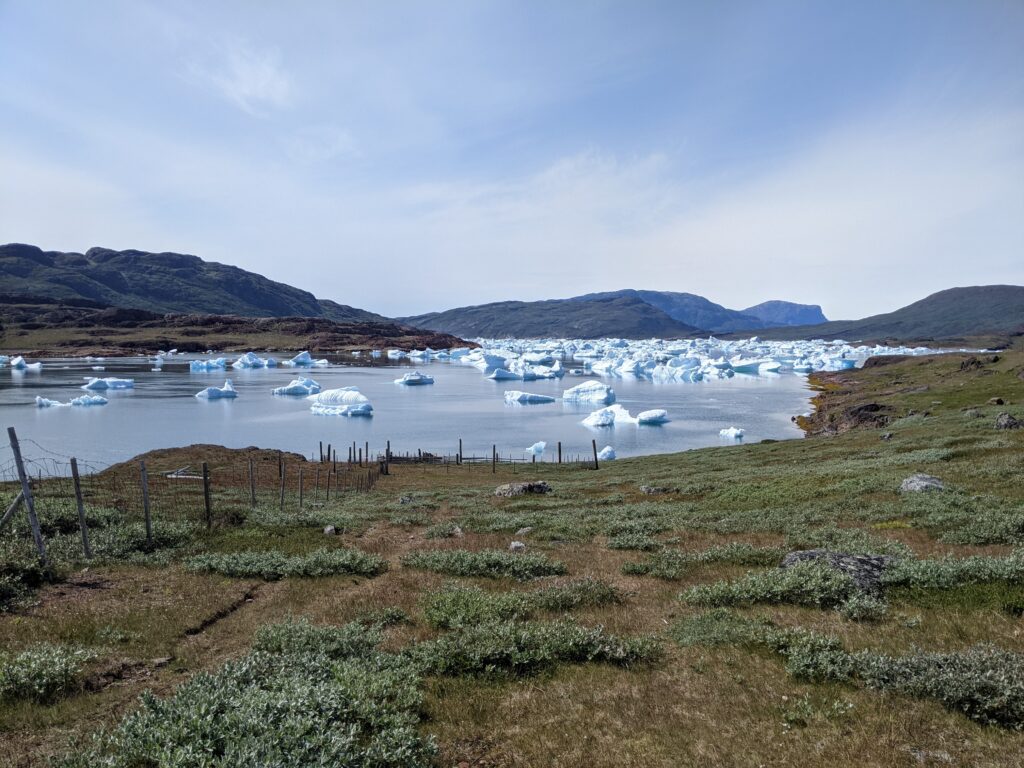
Now we are back in Switzerland, our post-field work begins. We are analysing the water samples for their physical and chemical properties, the stickleback’s morphology by staining them with a special dye, and extracting DNA which will be sequenced for genetic analysis. While this might take some time to process, we are eager to see the results.
The 2023 Greenland team – Dr. Blake Matthews, Dr. Marek Svitok, EAWAG technician Danina Schmidt, PhD-student Zixin Li, research assistant Connor Morang, MSc-Student Maja Drakula and me – was divided into multiple partially overlapping teams and I was able to work with all of them; the incredible teamwork in the field and the after-work activities made this trip unforgettable. The scientific expertise, field experience and masterful dissections were invaluable but so were the shared experience, fishing and baking skills. I would also like to thank our local support for their warm hospitality. The time in Greenland was truly unique and amazing and was only possible through the support of the Swiss Polar Institute, thank you!
Dr. Hanna Rosinger is a postdoctoral researcher at EAWAG in Aquatic Ecology and Evolution. Her fieldtrip took place in summer 2023 with financial support from a Polar Access Fund grant.
Header photograph: © 2023 Hanna Rosinger, all rights reserved